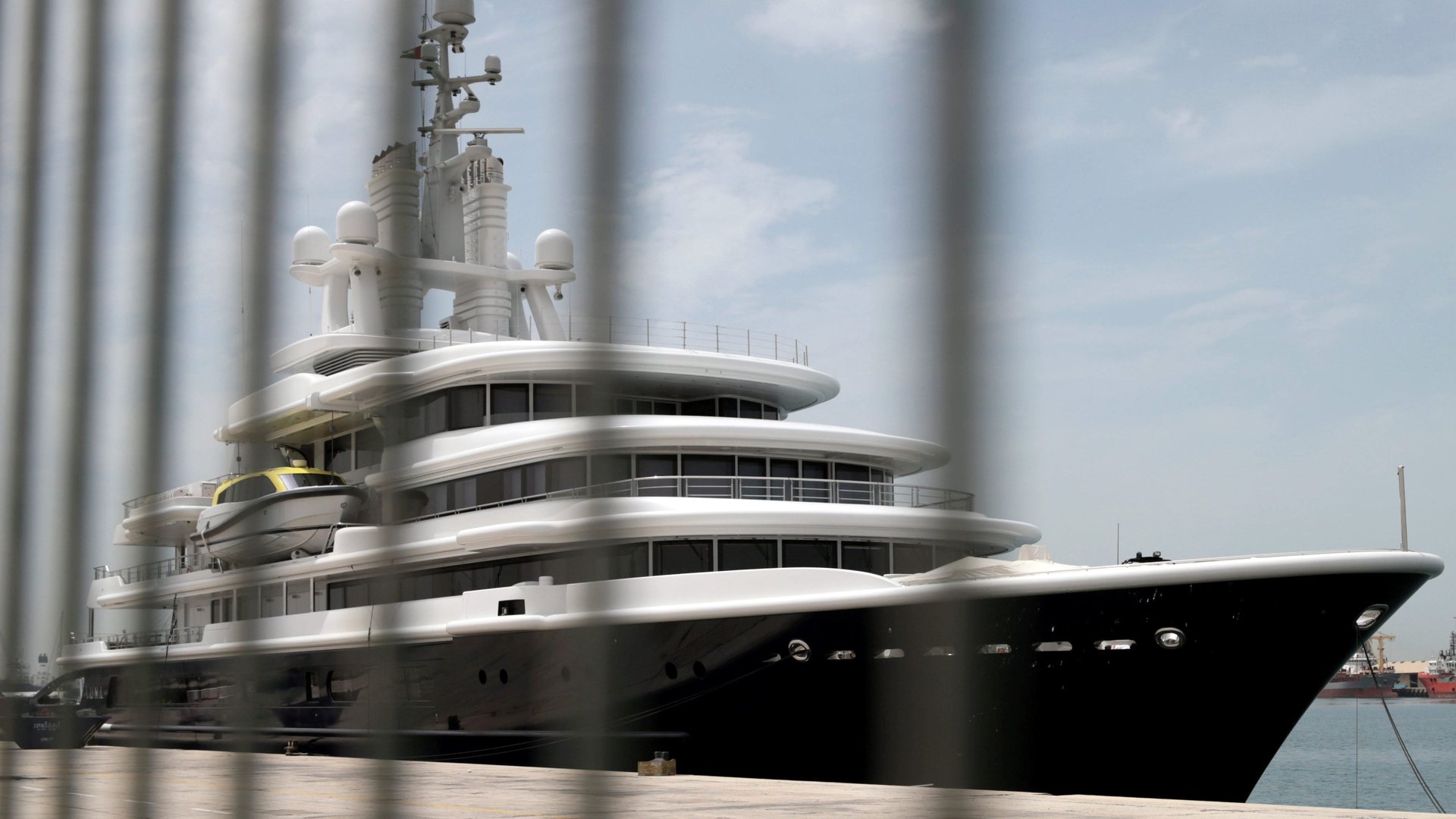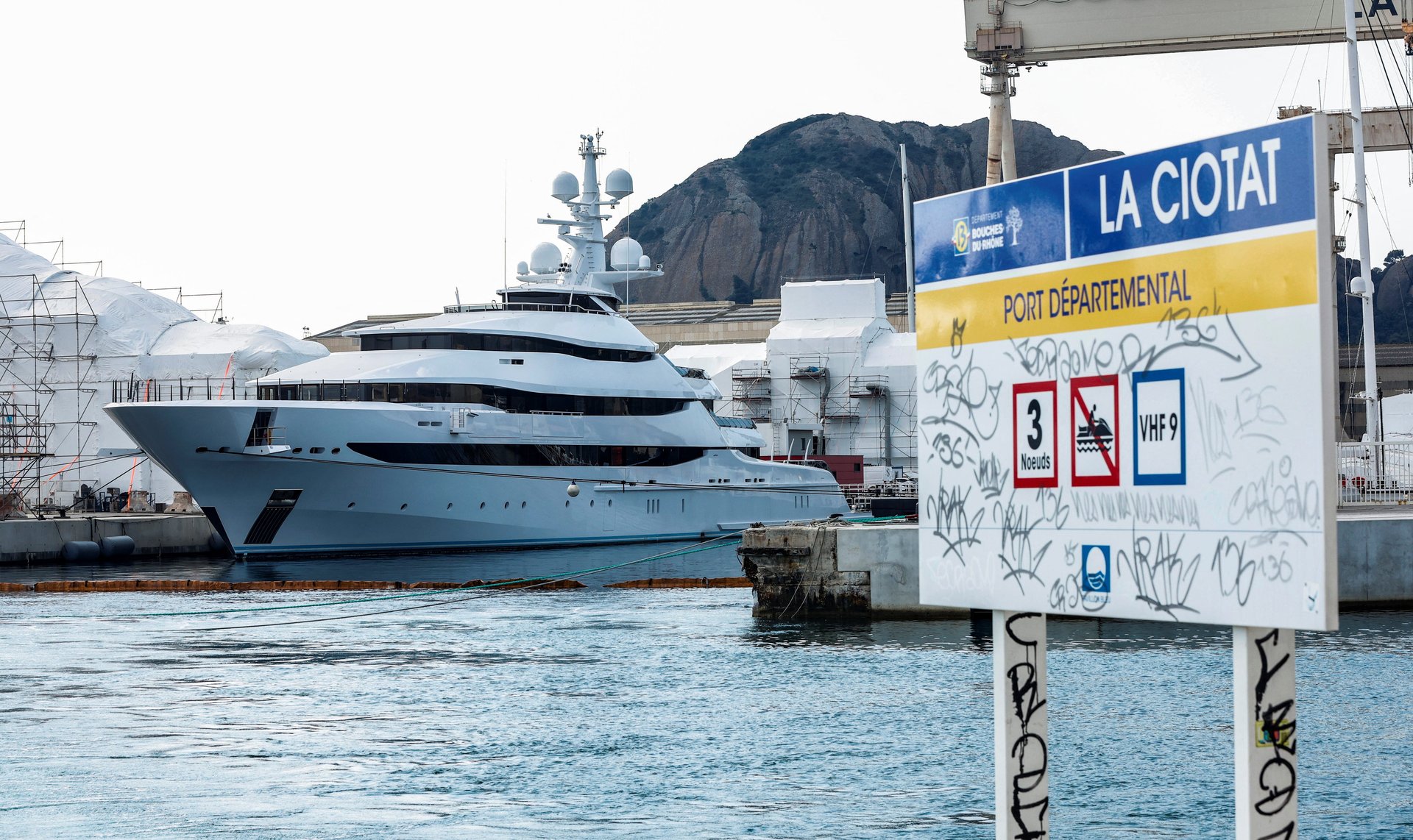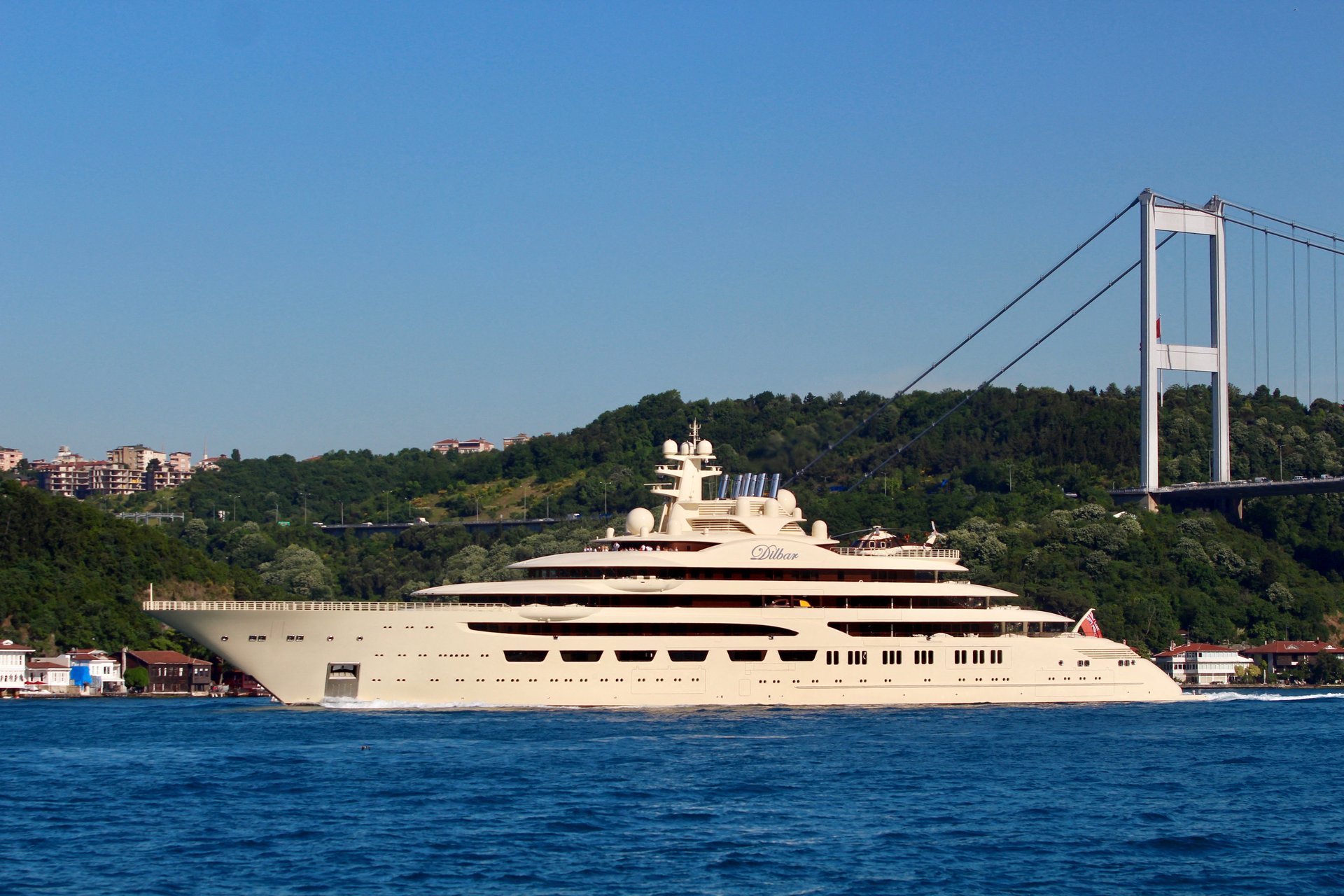What happens when a Russian oligarch’s yacht is seized?
When French customs officers boarded the Amore Vero before dawn on Thursday (March 3), they found the crew urgently preparing to set sail—a month before the superyacht’s scheduled departure, and with repairs still unfinished. The $120 million, 289-foot yacht is believed to be owned by Russian oligarch Igor Sechin, who heads up the state-owned oil major Rosneft. The officers seized the vessel in accordance with the EU’s sanctions on Russia (pdf, in French).


When French customs officers boarded the Amore Vero before dawn on Thursday (March 3), they found the crew urgently preparing to set sail—a month before the superyacht’s scheduled departure, and with repairs still unfinished. The $120 million, 289-foot yacht is believed to be owned by Russian oligarch Igor Sechin, who heads up the state-owned oil major Rosneft. The officers seized the vessel in accordance with the EU’s sanctions on Russia (pdf, in French).
The Amore Vero remains moored in La Ciotat, a harbor town on France’s Cote d’Azure, awaiting a fate that Benjamin Maltby, an attorney who specializes in superyacht law for the UK-based firm Keystone Law, described as “completely unprecedented.”
In the hands of harbor authorities
The unique circumstances that led to the seizure or detention of the Amore Vero in France, the Lena and the Lady M in Italy, and the Dilbar in Germany, means their fates going forward will be different from yachts seized in the past.
Maltby says it’s not uncommon for superyachts to be detained. Outside the context of international wartime sanctions, yachts are normally seized as holders of value over disputes like unpaid mooring fees. A yacht could either be chained to the dock or not, and the crew remains onboard, at the expense of the owner, performing daily maintenance duties. Once the dispute is resolved, the yacht is free to sail.
The Russian yachts are expected to remain in the custody of the harbor where they were detained. (There is no global impound lot full of the superyachts of the criminal and delinquent.) However, since the owners of the Russian superyachts are sanctioned, they can’t pay the crew, or mooring fees. Maltby says the chatter on superyacht Facebook groups suggests crews on these yachts are not confident they will be paid and have abandoned ship, or will.
Without maintenance, Maltby said, “yachts want to self destruct and left to their own devices they do deteriorate and become dilapidated very quickly.” The rubber components on the engines start to crumble. Rainwater gets in, sunlight degrades the plastic. If it’s on the water rather than on a dry dock, salt water will begin to corrode the hull. Left long enough—the duration of a war that has already proven to be longer than anyone anticipated, for example—a yacht could even sink.
The cost of maintenance, Maltby says, is usually estimated to be 10-15% of the value of a yacht. At the lower end of the range, it costs $12 million a year to maintain the Amore Vero, which neither the harbor authorities nor governments seeking to punish Vladimir Putin’s allies are likely to shoulder. Maltby posits that depending on how long the sanctions are enforced, the yachts may be treated like captured warships, kept and maintained at a minimum level to keep them from sinking and polluting the surrounding waters.
Where seized yachts owned by Russian oligarchs are being kept
Igor Sechin’s Amore Vero

Alisher Usmanov’s Dilbar

Alexey Alexandrovits Mordaschov’s Lady M
Gennady Timchenko’s Lena
Other ways to lose a superyacht
There are about 5,000-6,000 superyachts in the world, Maltby says. Of those, about 10% are owned by Russians, not all of whom, presumably, are Putin-allied oligarchs, meaning the number of superyachts subject to US and EU sanctions is likely in the dozens rather than the hundreds. And not all of those may need to be seized.
One yacht broker interviewed by the Associated Press expects a few Russian-owned superyachts will soon be sold at fire-sale prices as oligarch fortunes are wiped away by sanctions, an outcome that would likely undermine what the superyachts were conspicuous displays of in the first place. “One imagines it would hurt their pride and prestige,” Maltby said.
Other superyachts allegedly owned by Russian oligarchs have taken a different route. All vessels on the water are fitted with an automatic identification system, or AIS. Originally implemented to keep ships from bumping into each other, AIS also allows satellite tracking. On Feb. 23, days after the start of the invasion, the Amadea, disappeared from satellites off the coast of St. Maarten. The Galactica Super Nova flickered off the map seven days ago, as it left Montenegro, perhaps in the hopes that they can’t seize what they can’t find.